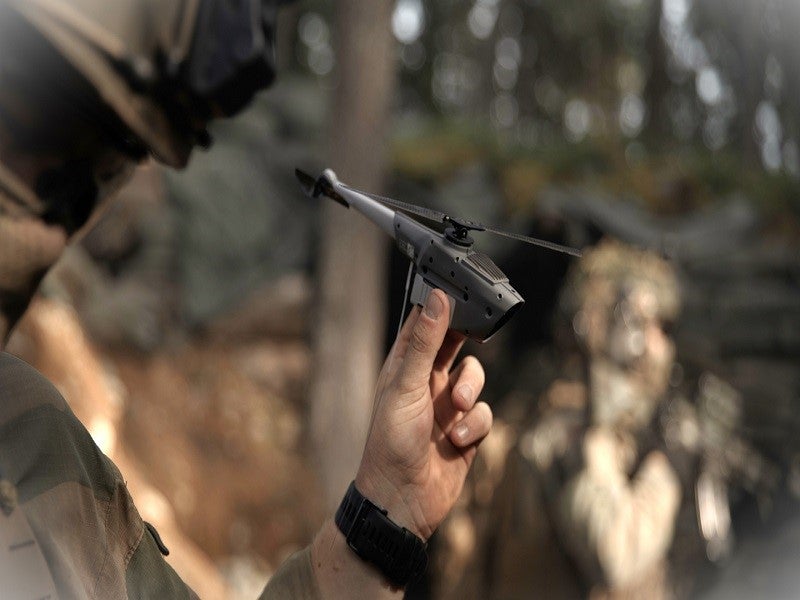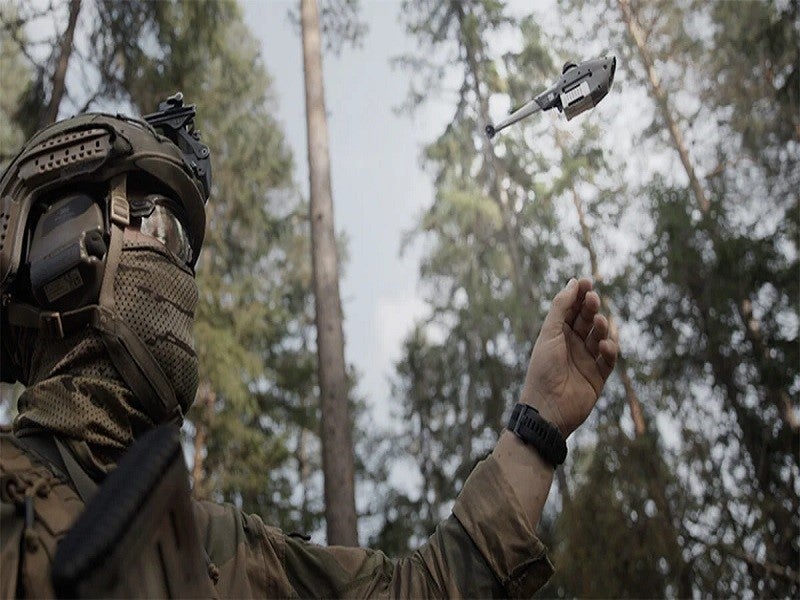The Black Hornet 4 is a next-generation airborne personal reconnaissance system (PRS) developed by Teledyne FLIR Defense, a subsidiary of Teledyne Technologies.
Teledyne FLIR Defense introduced the Black Hornet 4 at the Association of the US Army (AUSA) conference in Washington DC, in October 2023.
Crafted for dismounted soldiers, the Black Hornet 4 is ideal for missions in global positioning system (GPS) denied environments.
It enables quick target identification beyond visual line-of-sight and real-time assessment of weapon effects.
The Black Hornet 4 is part of Teledyne FLIR Defense’s Black Hornet drone portfolio. The upgraded nano-drone provides enhanced covert situational awareness for small units compared to its predecessor, the Black Hornet 3.
The Black Hornet drones are in service with the US Army after being acquired as a part of the Soldier Borne Sensor programme, with orders exceeding $125m, since 2018.
Teledyne FLIR Defense has supplied more than 20,000 Black Hornet PRS systems to military and security forces in more than 40 countries. Black Hornet drones, acquired by the British and Norwegian governments, are being deployed in Ukraine.
Black Hornet 4 personal reconnaissance system design and features
The Black Hornet 4 PRS features a rotor diameter of 190mm (7.5in) and a total length of 255mm (10in). It weighs about 70g (2.5oz) while its combined system weight is 1.3kg.
The drone operates within a temperature range of -20°C to 43°C, wind speeds of up to 25 knots, and gusts reaching 30 knots. It offers advanced visual detection, enhanced audio performance, and superior electromagnetic signature capabilities.
Adhering to STANAG 4609 and Cursor on Target (COT) standards, the PRS features AES 256 encryption for video, snapshots, and metadata and utilises a removable 256GB SD card to store mission data, which is also encrypted.
It supports Robotics and Autonomous Systems – Air (RAS-A) and Micro Air Vehicle Link (MAVLINK) protocols and is compatible with the Android Team Awareness Kit (ATAK). It can be integrated with certain battle management systems (BMS).
In addition, the Black Hornet 4 platform serves as the cornerstone for integrating AI, which enhances autonomy and reduces cognitive strain, making it suitable to meet the evolving needs of soldiers in the field.
Payload details of Black Hornet 4
The Black Hornet 4 is equipped with a 12-megapixel electro-optical (EO) main camera that performs well in low light, complemented by an EO navigation camera and three low-resolution cameras specifically for indoor navigation and collision avoidance.
It also features a night imager with a 650 × 512 pixels (px) resolution, a high-sensitivity thermal imaging (TI) camera, and an illuminating white LED.
The Black Hornet 4 boasts electro-optic (EO) video with a resolution of 1280 x 720 pixels, EO snapshots at 3,024px x 4,03px, thermal imaging video at 512px x 640px, and TI snapshots at 512px x 640px.
Black Hornet 4 navigation capabilities
The Black Hornet 4 features advanced navigation capabilities, including global navigation satellite system (GNSS) and GNSS-denied capabilities.
It offers continuous collision avoidance in both day and night conditions, integrates embedded digital terrain elevation data (DTED), and provides options for vector and raster mapping.
The Black Hornet 4 PRS features a software-defined radio (SDR) datalink that offers extended range and enhanced resilience. It has a radio range of more than 2km.
Performance of Black Hornet 4
The drone can be launched in under 20 seconds and boasts a flight endurance of more than 30 minutes. It can reach a maximum ground speed of 10m/s, equivalent to approximately 33ft per second.
The Black Hornet 4 also features new obstacle avoidance features and an upgraded battery that improves flight performance.





